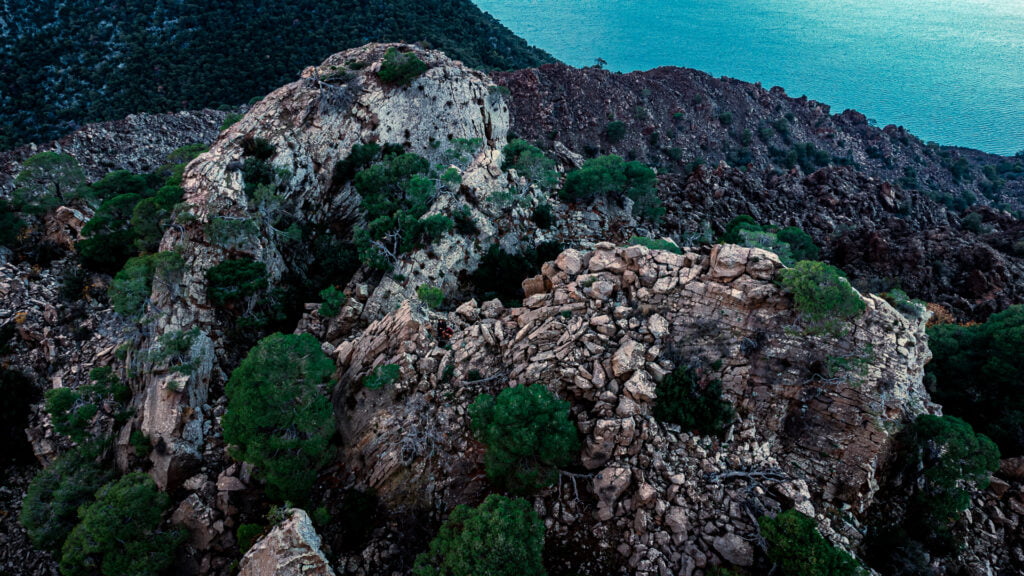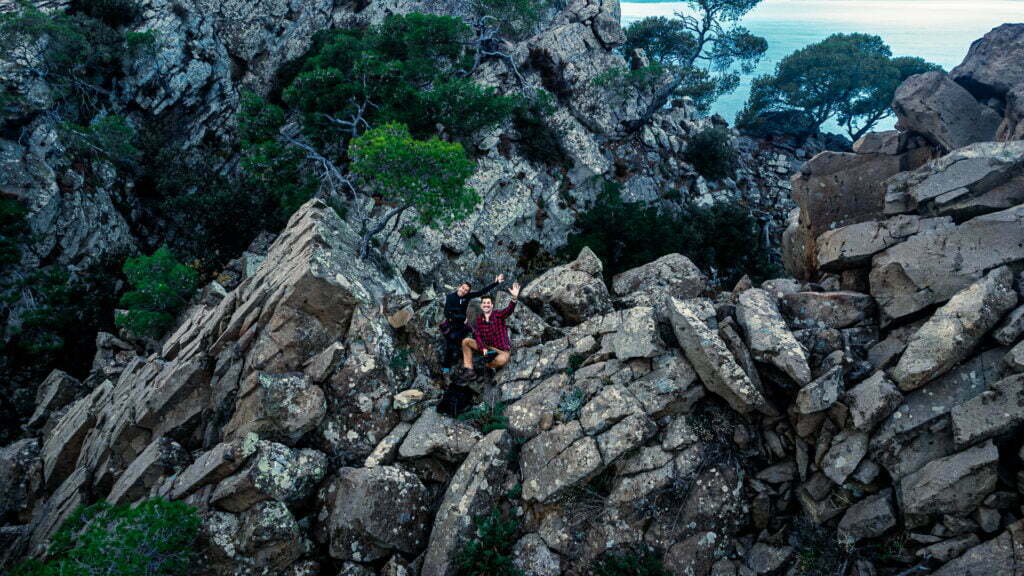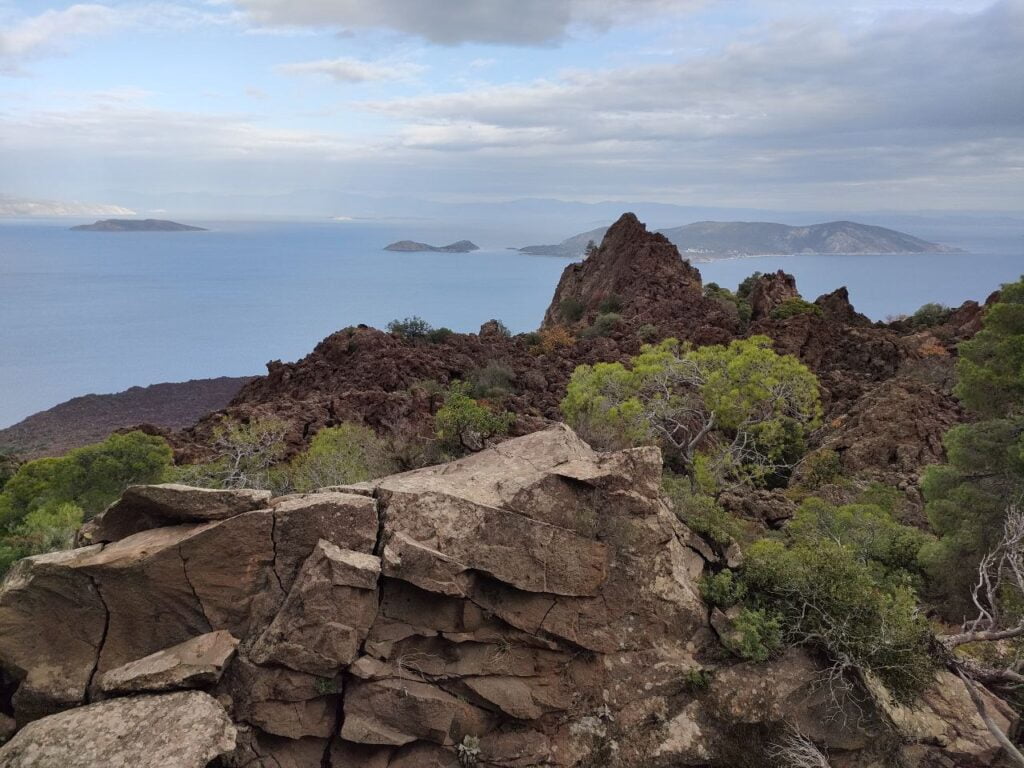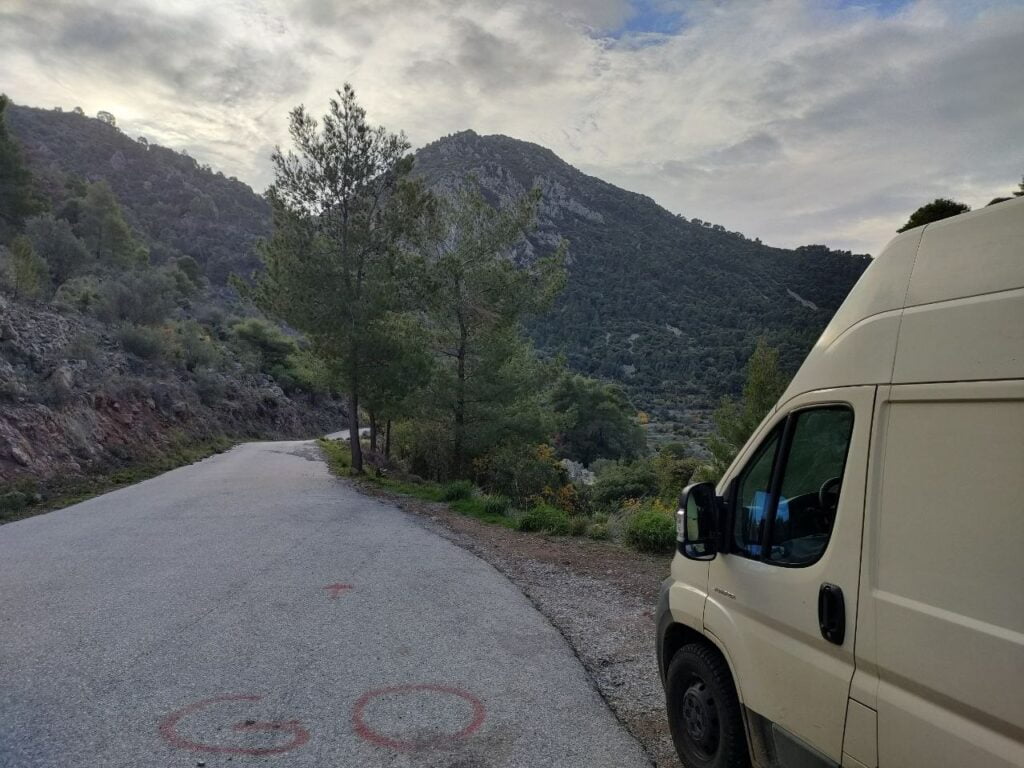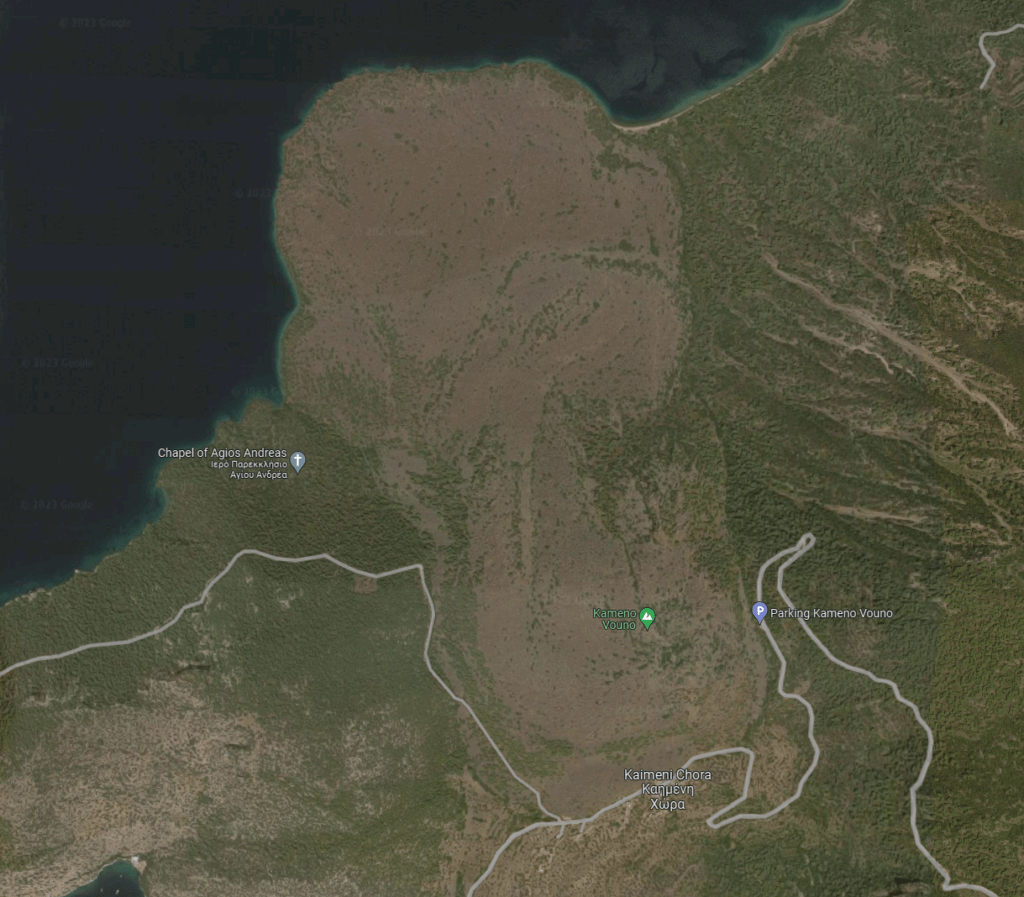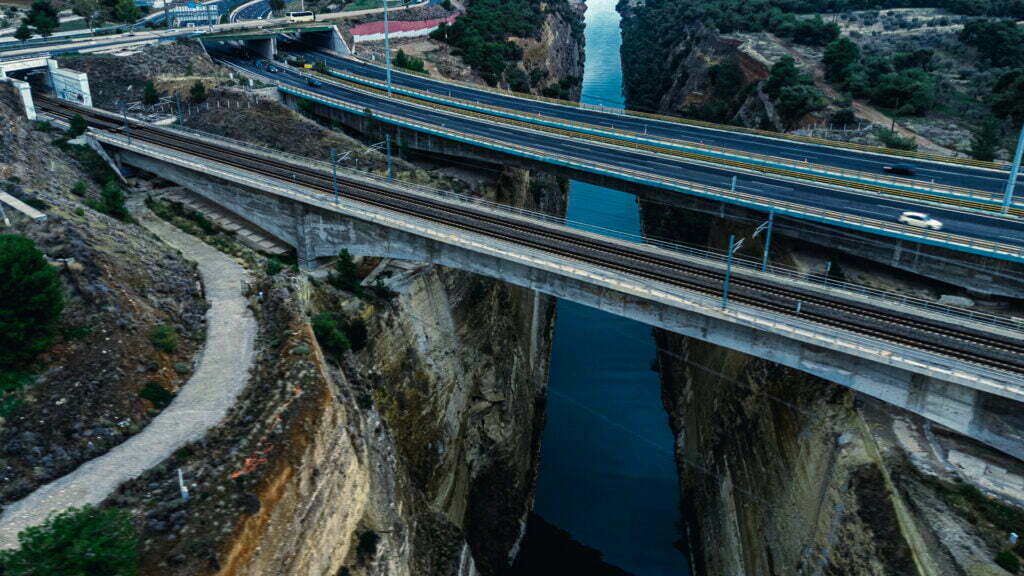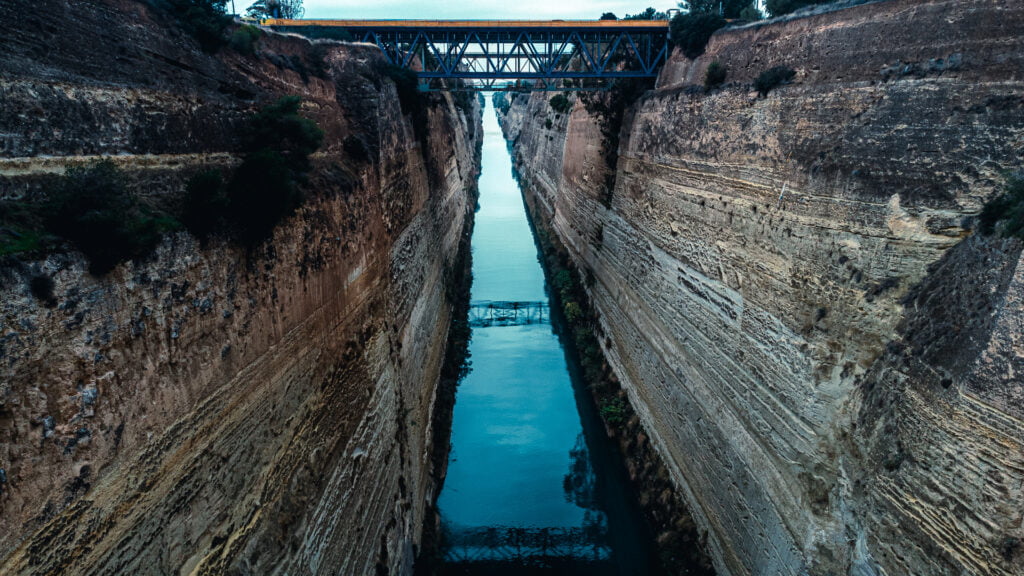On December 13, 2022 the time had come: After more than a month of traveling around the Peloponnese, it was time to leave this beautiful peninsula. But first we made a detour along a peninsula of the peninsula: Methana. This attached piece originated from no fewer than 30 different volcanoes. It is a rough but beautiful place, interspersed with small picturesque villages. We ventured to follow the winding mountain roads through the wild landscape with Nigel.
Methana - real island vibes
Due to all that volcanic activity, there are also several hot springs on Methana. These are not ‘always-on’ as we are used to, some are sometimes dry, as we read on Park4Night. Our first stop was Methana, the village of the same name on Methana. Here you will find a hot spring that partly overflows into the sea. This means that the temperature in the ‘bath’, consisting of rocks and masonry, fluctuates constantly. One moment hot, the next moment you get a wave of cold sea water over your back.
Unfortunately, this was not exactly an inviting place to linger. So after a short bath we drove further up the peninsula, looking for a place to sleep. That was not so easy, since there were few places besides the winding roads that were suitable to drive Nigel onto.
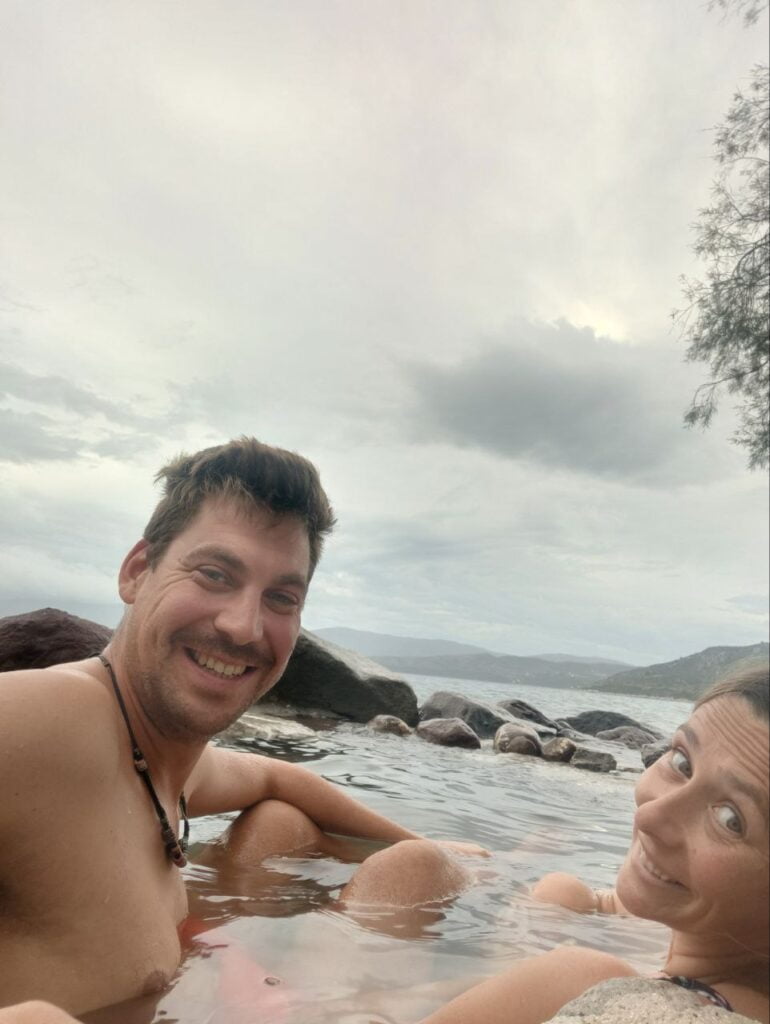
Finally we stopped at the last volcano that erupted on Methana, in 230 BC, at the village of Kameni Chora. There you can climb the volcano and of course we went looking for the crater. After a strenuous climb of about half an hour, the hike came to a dead end on a vertical piece of rock with climbing confirmations and a painted arrow pointing upwards and “Volcano” written on it. Yes, a pity, but that’s where it ended for us. Or not? We started to scramble on our own over the rocks, say boulders, in search of a higher point. It certainly wasn’t easy, but we found a point with a view. I launched the drone from there in the hopes of identifying the actual crater. I didn’t find that one, but it did provide nice images…
Back down we read on the signs that there is no crater at all, the lava just ran into the sea, as you can see better on satellite images. Nigel was right next to the road, where absolutely no one, absolutely no one, passed, so we decided to just spend the night there. I think one car passed through the whole evening and night. A strange feeling of desolation that we are no longer used to in densely populated Western Europe came over me, together with the idea that we were completely on our own there. The last time I had this feeling was in Albania, on our first stop at the beach. We had a restful night and left the next morning along the western side of the peninsula.
Corinth - and its flop of a canal...
After a short visit to the city of Corinth, where we also had passport photos taken for Nikki’s temporary passport, we stopped at the Corinth Canal. Impressive to see, but the history behind this phenomenon is fascinating to say the least:
Believe it or not, the idea of digging a canal through the narrowest part of the Peloponnese to connect the Gulf of Corinth to the Aegean Sea, avoiding a long round trip around the Peloponnese, is not new. It was even proposed in the 7th century BC by Periander, the tyrant of Corinth. However, without modern technology it was not really feasible, and Periander had to be content with an alternative, a kind of ‘overland sled system’ for ships, also known as the Diolkos. This way ships and their cargo could still get from one side to the other, without having to circumnavigate the entire Peloponnese.
The idea of a canal, however, lived on. Even Julius Caesar and Emperor Nero had plans to dig it. Nero even went so far as to break ground with a golden shovel. But yes, it turned out differently for Nero and the channel was shelved.
It wasn’t until centuries later, in the more recent 1881, that the modern attempt to dig the canal began, using dynamite and steam engines. But it was not an easy job. After 11 years of digging, several financial problems and a lot of blood, sweat and tears, the Corinth Canal was finally opened in 1893. However, the story does not end there.
Although the Corinth Canal was originally intended to shorten the sea voyage around the Peloponnese and thus make shipping safer and more efficient, it never really enjoyed the economic success hoped for. The channel is rather narrow and shallow, which means that larger, modern ships simply cannot pass through it. The tides also create strong currents, making it difficult to guide smaller vessels safely through the canal. So despite all that hard work and the high cost of building it, the Corinth Canal soon proved obsolete due to the ever-increasing size of the seagoing vessels.
Fortunately, the canal has been able to transform itself into a major tourist attraction. Numerous tourists and smaller recreational vessels pass through the canal to enjoy the spectacular view of the steep man-made cliffs. For those who have the guts, there is also a possibility to bungee jump from a bridge, certainly not for us…
Despite not having the revolutionary impact on shipping hoped for, the Corinth Canal is still a must-see for any traveler visiting the Peloponnese. It just goes to show that sometimes, even when things don’t go according to plan, something beautiful and valuable can still come out of it.
Today, when you sail (or drive) across it, it’s hard to imagine the effort that went into creating this 6.3-kilometer-long and 21.4-meter-wide swath of water. It is certainly an impressive achievement and an important piece of history connecting the waters of Greece. Technically, you could also say that the Peloponnese has become an island because of this channel.
With this we close the Peloponnese chapter. After enjoying the green landscapes, the wonderful beaches and the great vibe for more than a month. We can warmly recommend this part of Greece to anyone who enjoys ‘laid-back’ travel and nature. Out of necessity we then set course for the Belgian embassy in Athens. As the loyal reader will know by now, we are cool lovers of big cities, but of course we will try to make the best of it… Until next time!




